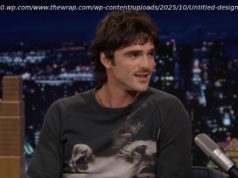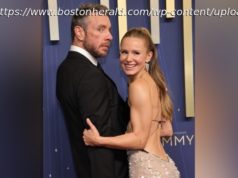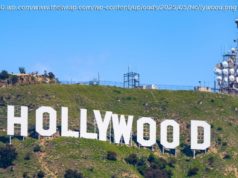The look back at the early years of Han Solo is far more cohesive than its troubled production history would suggest.
For a movie that lost its original directors midway through production, Solo: A Star Wars Story feels less like a Frankenstein’s monster than it might have.
Yes, it’s hard to shake the sense that we probably didn’t need a “young Han Solo” story, and the way it tries to walk the line between explaining how the roguish Han of the original Star Wars trilogy came to be and letting this young Han have some big hero moments can feel slightly like it was engineered in a lab. Did we need to see Han do the Kessel Run in 12 parsecs? Not really, but this is 2018, and everything will be overexplained.
But the movie is entertaining, and its second act (centered on a big heist) is a tremendous amount of fun. If you are a Star Wars fan — or just a fan of movies where things go boom and spaceships go really fast — you’ll probably have a good time. And if you’re not particularly inclined to see this one, you won’t be missing out on some deeper secret corner of the Star Wars mythos.
This is just a fun summer movie, with some great escapes and some derring-do. And in an age when our blockbusters feel more pointlessly busy and somber than ever, that just might come as a relief. There are good guys and bad guys and in-between guys, and Chewbacca gets to do his Chewbacca thing. It was, ultimately, enough for me, and maybe it will be for you too.
So here are five things to know about Solo, the better to make up your mind as to whether it’s for you.
The firing of Phil Lord and Christopher Miller midway through production on Solo should have killed it. Even though veteran Ron Howard was tapped to bring the whole enterprise in to dock, and even though so much of modern blockbusters is created by visual effects technicians in post, the styles of Lord and Miller (improvisatory, comedic, anarchic) and Howard (actor-focused, traditionalist) couldn’t be more different. There was every reason to fear the movie might veer wildly between the two tones.
But Solo hangs together, for the most part. There are storytelling seams here and there — particularly in a jarring shift from the main action of the film (the aforementioned heist) to a final showdown that shoehorns in at least three more story turns than necessary — but those might as easily be the fault of the script as anything else. Solo is dedicated to telling the story of the young Han Solo’s growth into the winning scoundrel we met back in Star Wars, and that keeps it from falling apart.
The fact that Howard retains sole directing credit suggests that he reshot much of the film. (Lord and Miller are listed as executive producers instead.) That may explain the movie’s cohesion. But said cohesion might just as easily be explained by the way the movie uses familiar Star Wars totems like the Millennium Falcon, or Lando cheating at cards, or Chewie’s yowl, as signposts along the road its story travels. Solo has its eye on the Star Wars ball, and that keeps it from wandering too far afield.
If there’s something that keeps Solo from going from “pretty good” to “terrific,” it’s the way much of the movie is shot in close-up, probably to allow for Howard to reshoot sequences while keeping budgets down. (Close-up means that only a small portion of the set has to be dressed for the background, among other things.)
Howard is an excellent director of actors, so he gets what he’s looking for, about which more in a second. But the story of Solo involves Han and some friends pulling off a daring heist to get out from under the thumb of an intergalactic crime syndicate. Heist movies require building chemistry among an ensemble, and close-ups — designed to let us into the head of one character — accomplish the opposite of that.
Solo doesn’t entirely falter because of this. The movie pulls back to a two-shot or even a wider shot featuring more of the ensemble when it absolutely has to. But some of the film’s biggest emotional moments fall a little flat because the connections and chemistry between the actors haven’t been properly cared for.
There were worried grumbles through the rumor mill that Alden Ehrenreich (who plays young Han) was struggling to nail the part of the cocksure pilot during production. Whether those rumors were true and Howard helped Ehrenreich find the character’s center or the rumors were never true to begin with, the performance the actor gives in Solo should help boost him to the next level of stardom.
Where Harrison Ford was all arrogance and smirking self-aggrandizement in the original trilogy, softening only when he thought nobody else might be looking, Ehrenreich’s Han is more sly and more unsure of himself. That makes sense, as the story is partly about how Han became the Han we know so well. But that’s also not to discount Ehrenreich’s strength with a tossed-off one-liner or a physical gag. (At one point, Han and Chewie shower together, and it’s great.)
Then there’s Donald Glover, king of all media, who takes on the role of Lando, Han’s old frenemy, and offers a take on the character that suggests so much of his effortless cool is bluster and balderdash. Lando is always scamming someone, and that might be why Han is so drawn to him. But he’s also got a hidden emotional core, which makes him, in some ways, the original Star Wars Han Solo of Solo: A Star Wars Story.
Poor Emilia Clarke, who does her all to bring a dose of vim and vinegar to Qi’ra, the great lost love of Han Solo’s life, who we know has to be lost because, well, we’ve seen the movies where Han falls in love with Leia. This is always the danger with a prequel — we know where the story is headed — but it can be overcome with a story unpredictable enough to land exactly where it has to in a way that still satisfies.
Qi’ra turns out to be someone Han loved and left behind on Corellia, the planet where he grew up, and when he bumps into her again under unexpected circumstances, the two are meant to enact a will-they/won’t-they dance of “who can trust whom” that will help us understand just how Han became so wary of trusting anyone in the original films. Ehrenreich and Clarke have serviceable chemistry, and Clarke is a lot of fun when she’s roped into Han’s ragtag crew. So there are the glimmers of something here.
But the film’s third act, when we see how Han and Qi’ra part (or are torn apart), as we know they must, never justifies the decision to tell this particular story, beyond adding another new character to the Star Wars mythos.






